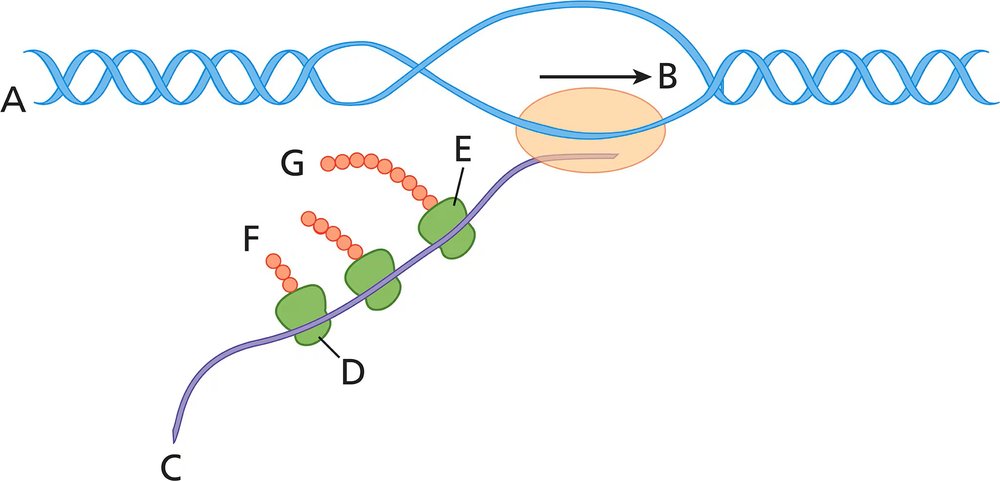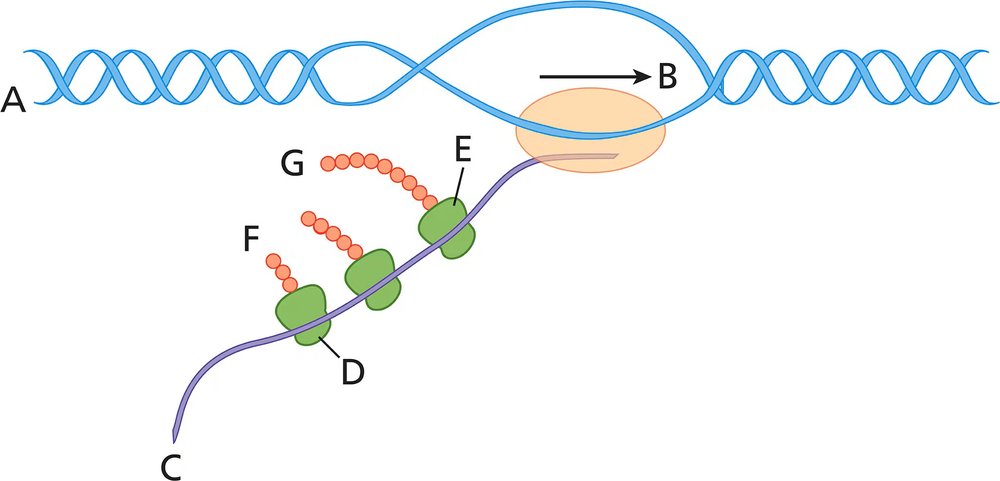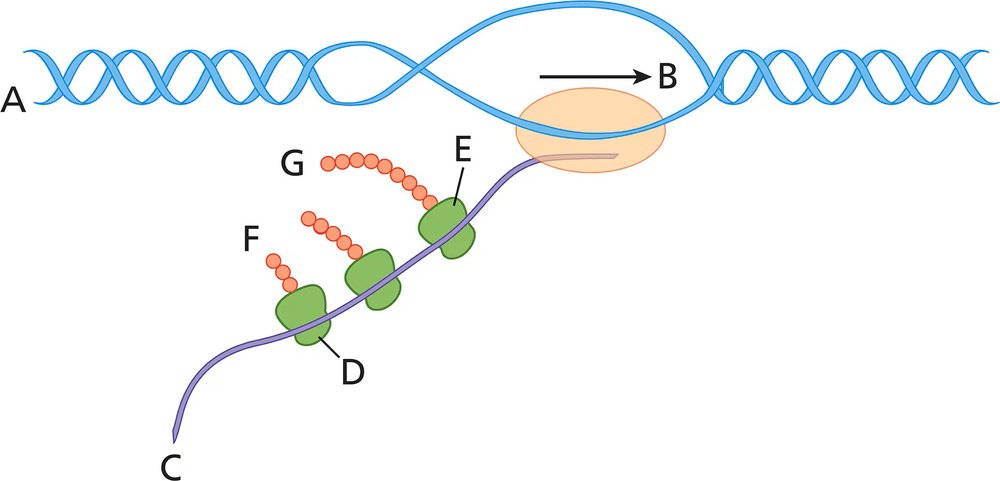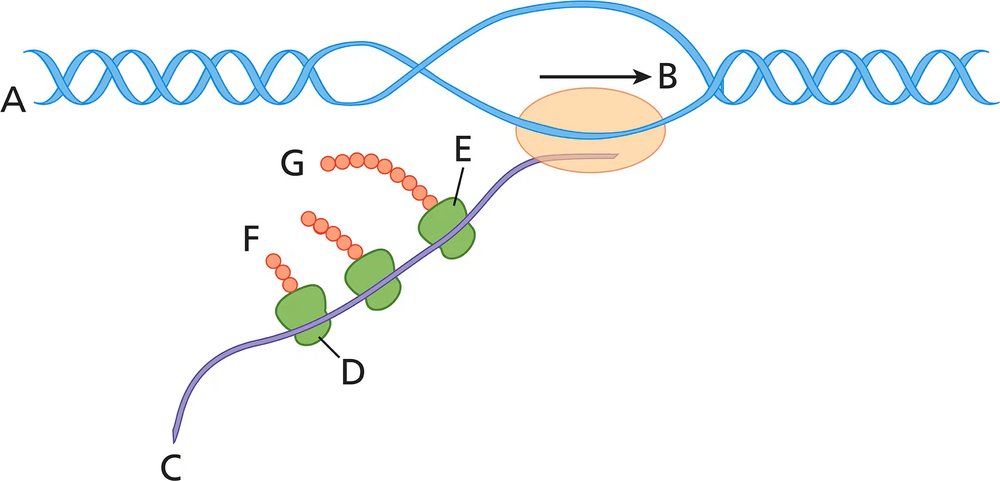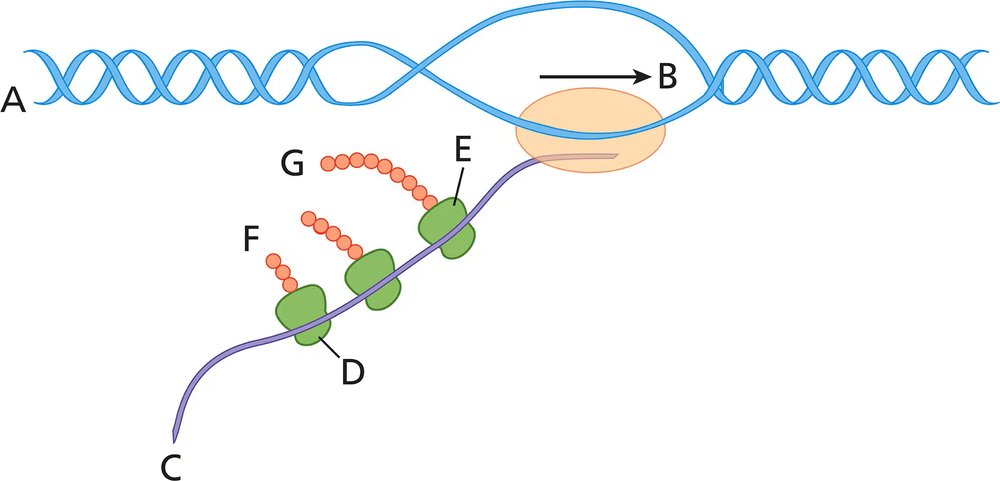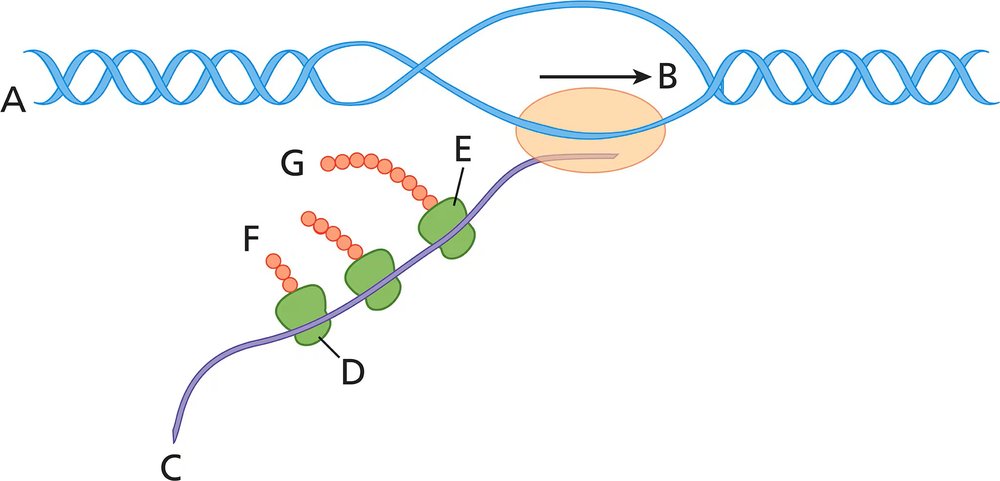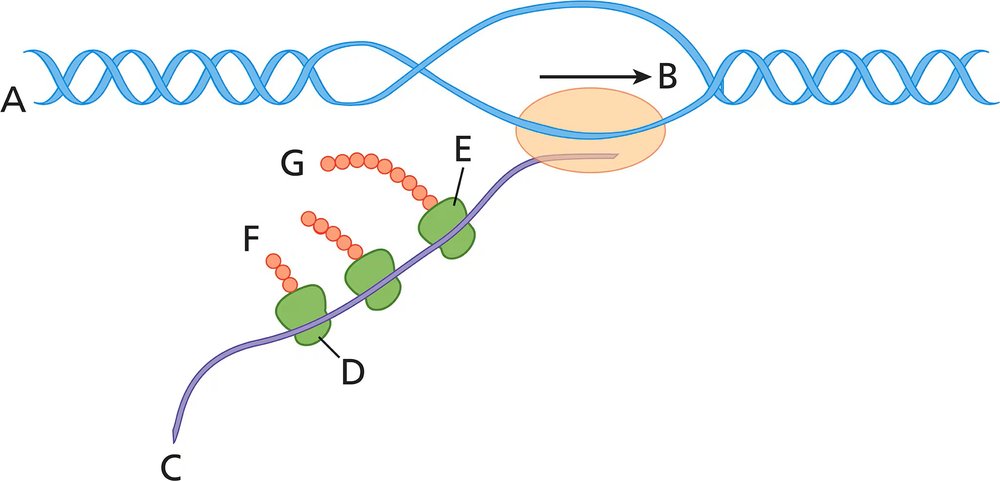 Back
BackProblem 37
In terms of the polycistronic composition of mRNAs and the presence or absence of Shine–Dalgarno sequences, compare and contrast bacterial, archaeal, and eukaryotic mRNAs.
Problem 38a
Organisms of all three domains of life usually use the mRNA codon AUG as the start codon.
Do organisms of the three domains use the same amino acid as the initial amino acid in translation? Identify similarities and differences.
Problem 38b
Organisms of all three domains of life usually use the mRNA codon AUG as the start codon.
Despite AUG being the most common start codon sequence, very few proteins have methionine as the first amino acid. Why is this the case?
Problem 39a
Answer the following questions about the accompanying diagram.
Is the DNA nearest A the template strand or the coding strand?
Problem 39b
Answer the following questions about the accompanying diagram.
Which end of the DNA is closest to A?
Problem 39c
Answer the following questions about the accompanying diagram.
What structure is closest to B?
Problem 39d
Answer the following questions about the accompanying diagram.
What is the name of the molecule closest to C?
Problem 39e
Answer the following questions about the accompanying diagram.
Which end of the molecule is closest to C?
Problem 39f
Answer the following questions about the accompanying diagram.
What structure is closest to D? Be specific.
Problem 39g
Answer the following questions about the accompanying diagram.
What structure is closest to E? Be specific.
Problem 39h
Answer the following questions about the accompanying diagram.
What name is given to the object looking like a string of beads that is closest to F?
Problem 39i
Answer the following questions about the accompanying diagram.
Indicate where fMet is located in the string to the right of G.
Problem 39j
Answer the following questions about the accompanying diagram.
Which end of the polypeptide is closest to G?
Problem 39k
Answer the following questions about the accompanying diagram.
What process(es) are illustrated in the diagram?
Problem 39l
Answer the following questions about the accompanying diagram.
Does the diagram depict molecular activity in a bacterium or a eukaryote? Explain the reasoning for your answer.
Problem 40a
For each of the following tRNA anticodon sequences, give the sequence of the corresponding codon sequence, the amino acid carried by the tRNA, and the corresponding DNA coding strand sequence and polarity.
3′-UAC-5′
Problem 40b
For each of the following tRNA anticodon sequences, give the sequence of the corresponding codon sequence, the amino acid carried by the tRNA, and the corresponding DNA coding strand sequence and polarity.
3′-CCU-5′
Problem 40c
For each of the following tRNA anticodon sequences, give the sequence of the corresponding codon sequence, the amino acid carried by the tRNA, and the corresponding DNA coding strand sequence and polarity.
3′-AUG-5′
Problem 41
Base-substitution mutations often change the amino acid specified by a codon. For each of the amino acid changes listed, determine which ones can result from a one–base-pair substitution. For those that can result from a one–base-pair substitution, give the possible wild-type and mutant codons, listing multiple possibilities if there is more than one option.
Problem 42
For the sequences given in the following list, indicate whether DNA replication, transcription, pre-mRNA processing, or translation will be most immediately affected by deletion of the sequence. As precisely as you can, specify what step of the process is directly affected by the deletion.
a. start codon
b. TATA box
c. 5' splice site
d. ori sequence
e. -10 consensus sequence
f. Shine–Dalgarno sequence
g. 5' cap
h. termination sequence

